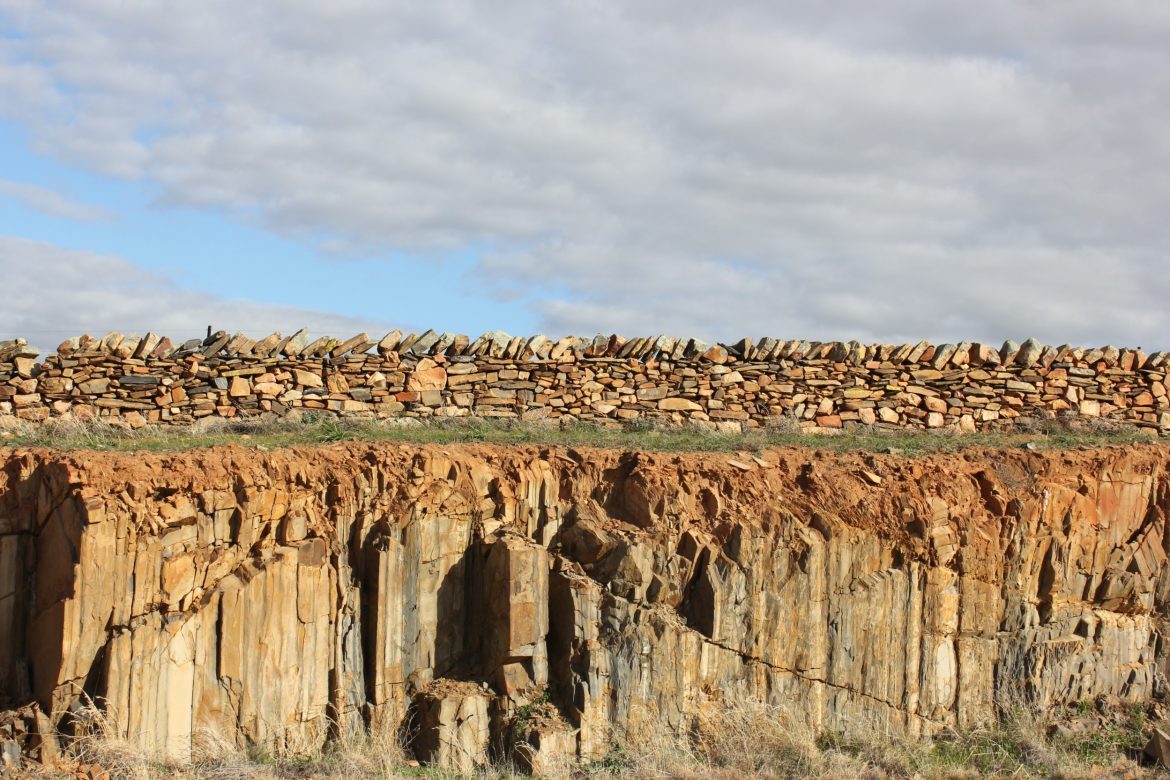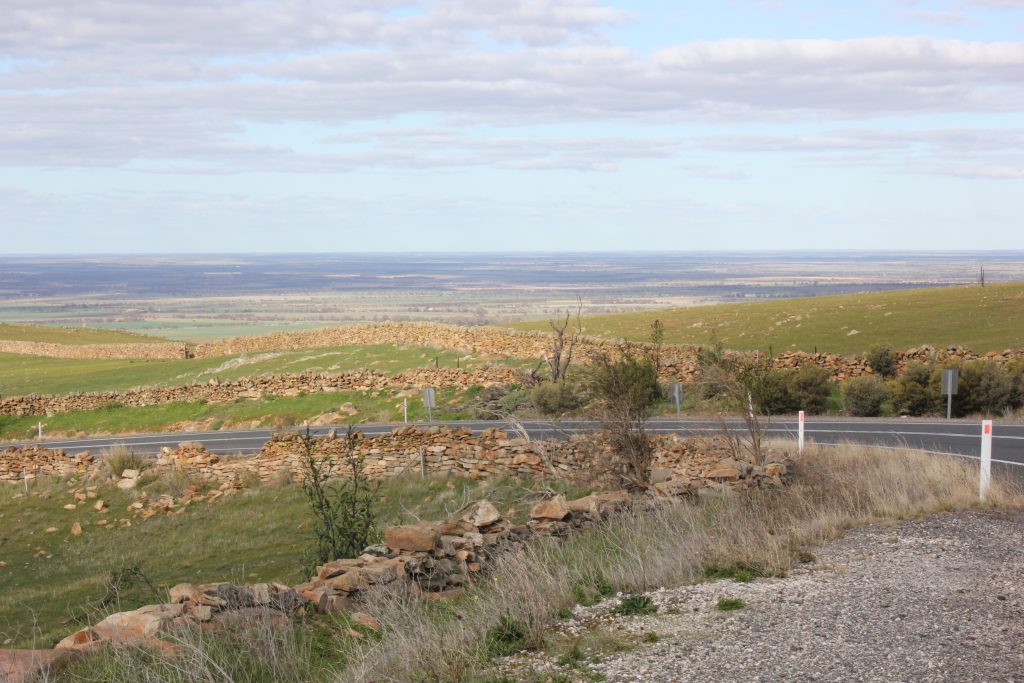
Stone Walls: Keyneton/Sedan Road, South Australia

Living in the Barossa Valley, one of the routes to get over the ranges and onto the Murray River Flats is the Keyneton/Sedan Road. It is a slow, twisting sealed road with steep descents and the most spectacular view of the flats. It is one of my favourite Sunday drives too because I marvel at the pioneer built stone fences which line this road and are also still used on the properties to keep the sheep in.

Before European settlement there was no need for fences- there was no need for land ownership and continuous cultivation among the Aboriginal communities. As the early pastoralists, farmers and graziers pushed out into the vast unknown of the new colony of South Australia, stock had to be close to known water sources and tended by shepherds.
In his fabulous book Those Dry Stone Walls- stories from South Australia’s Stone Age, Bruce Munday defines a dry stone wall as one that has had no mortar. The photographer for his book, his wife Kristin Munday, advised him to perhaps broaden his definition as a wall that looks as though it is dry stone on both sides, as they may have had mortar in the form of mud at some stage.
Dry-stone fences in South Australia started snaking around the landscape at the time of the Gold Rushes in the 1850s. The life of a shepherd was very lonely and the pay and conditions were not great- so when there was a chance of finding gold on the Victorian fields they simply up and left to seek their fortunes elsewhere. Without shepherds there was a sudden need to build fences. South Australia was not naturally blessed with forests of timber to create post and rail fences (although white ants still seem to love this area) but it had plenty of stone. In the early years, stone walls were not built to impress – they were cheap and used the available materials.
The history of how these fences were built is scantily recorded- it was all just necessary, everyday life back then- hardly interesting enough to write about! Bruce Munday heard a story at the Hawker Servo about the miles of stone walls built near the southern Flinders Ranges were apparently built ‘by a man with one arm and an Aboriginal Woman assistant’. Names, dates and details have been lost- their legacy remains.
My Dad is in love with the sort of countryside that needs a bit of clearing in order to run a few sheep and crop some feed. My childhood is dotted with memories of running behind the trailer picking up rocks and sticks and throwing them on as he sat in the car going really slowly with the heater blaring and the football commentary on AM radio. I am in my forties now and still have to do this- but instead of whingeing about having to do it I am very thankful to have a supply of mallee roots for a wood fire. On his property about 90 minutes from Sedan there are the remains of many stone buildings- a testament to some lonely, isolated pioneering lives in the early twentieth century.
But I digress.
I agree with Bruce, who states that ‘The Keyneton/Sedan Road should be recognised as a national icon, for the expansive view it provides of the Murray Plains… and the wonderful walls on both sides and the stories they support.’
The walls along the road were not built by farmers and pioneers: they were built by contractors for the North Rhine District Council in 1878 using the abundant materials of the area and using the existing handmade walls on the surrounding properties as inspiration. In 1877 a grant from the State Government made it possible to finally built an all-weather road in this section. A four-man drill was brought into service to do the cuttings along the full length of the ascending road. The stone from the cuttings was used to build the walls and the rubble was used for road fill.
The walls are now on the State Heritage Register.
References:
Munday, Bruce, and Kristin Munday. Those Dry-Stone Walls: Stories from South Australia’s Stone Age. Wakefield Press, 2015.
Thanks also to the patient cars behind me while I was going super slow on the road trying to find a spot to pull over and take the photos!




Darlene
June 27, 2020 at 5:11 pmGreat wonderful history of South Australia often wondered how and why the walls were built, your information has satisfied my curiosity
admin
June 28, 2020 at 10:32 amThank for your feedback, Darlene! There are many places around South Australia that you can see examples of dry stone walls. And no that does not mean I want to build one myself! Best wishes, JJ.